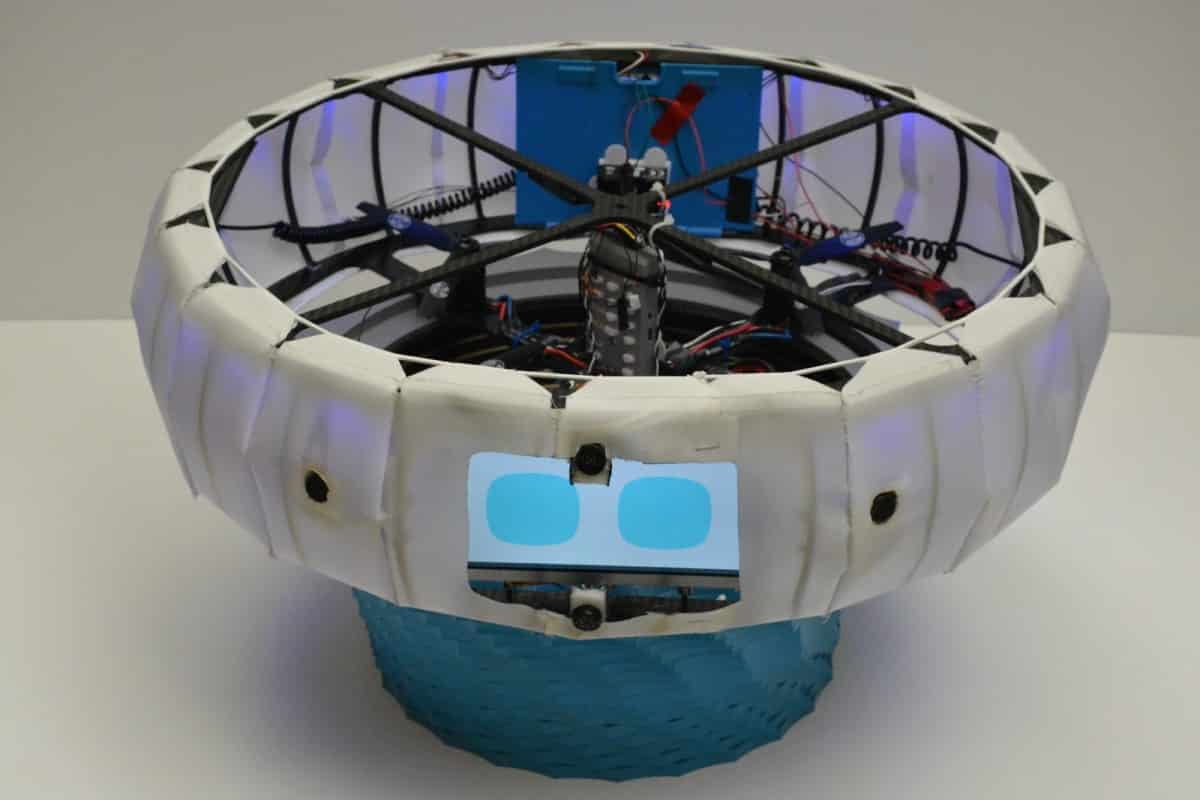
A drone which recognizes when a soccer player faints or a riot breaks out. It will probably fly through the Philips Stadium in Eindhoven in about five years time. Blue Jay, a student team from Eindhoven University of Technology (TU/e), is developing a flying assistant for the security team.
The drone will help security guards, firefighters and police officers located around the Philips Stadium with maintaining security during matches and events. “The drone is able to recognize unusual situations and pass them on to the emergency services,” says Emmie Schoutens, PR manager at Blue Jay. “We want the drone to be able to bring an AED to a victim as well. In addition, we are working on a feature that allows the drone to communicate, for example in order to guide people to an exit.” According to the PR manager, the drone is already able to recognize when someone falls, although other technology still needs to be further developed.
Bringing techniques together
Because the device uses various techniques, the students work in different teams. “This is how we try to achieve the best results in all areas,” says Schoutens. The software team ensures that the drone can fly independently and can circumvent obstacles. Providing effective emotion detection is the task of the interaction design team. They are also working on an application which allows the drone to communicate. The hardware team is responsible for the optimal product. “If all these techniques are well developed, we’ll bring them all together in the ultimate machine.”
Yet more is needed for the ideal drone. According to her, development also depends on other techniques and products, such as batteries. “The lighter the batteries, the less power the drone needs in order to take off on its own. This means that its own weight is less, so its power can be used for something else. Such as lifting heavier items,” Schoutens explains.
Assistant in the hospital
For about two years now, the Blue Jay student team has been developing a support drone. Initially the intention was that it would fly in the hospital as an assistant. That turned out to be more difficult than expected. “A drone causes air displacement, a kind of wind. This wind within the narrow corridors of the hospital makes the machine more unstable.” That is why the team has now taken a different course, though the students have not completely lost sight of the hospital. ” We will continue to look at applications in the hospital. A narrower drone, with only one propeller instead of four, could be a solution.” That’s why the team is currently working on a project aimed at developing this. “It’s quite a challenge to use only one propeller. The drone has to be steered properly because otherwise it will rotate on its own axis.”. That turned out to be more difficult than expected. “A drone causes air displacement, a kind of wind. This wind within the narrow corridors of the hospital makes the machine more unstable.” That is why the team has now taken a different course, though the students have not completely lost sight of the hospital. ” We will continue to look at applications in the hospital. A narrower drone, with only one propeller instead of four, could be a solution.” That’s why the team is currently working on a project aimed at developing this. “It’s quite a challenge to use only one propeller. The drone has to be steered properly because otherwise it will rotate on its own axis.”
After the summer, new students are joining the team. They are taking over the baton from the current group. “They are going to further expand and develop the technique so that the drone can fly even more accurately and are able to stop in time in response to obstacles”, says Schoutens. There is also a personal motive for participating in the team. “It’s a great opportunity to put into practice the things you are learning during your studies. Everyone works out of their passion to develop drones which make life easier and safer.”

